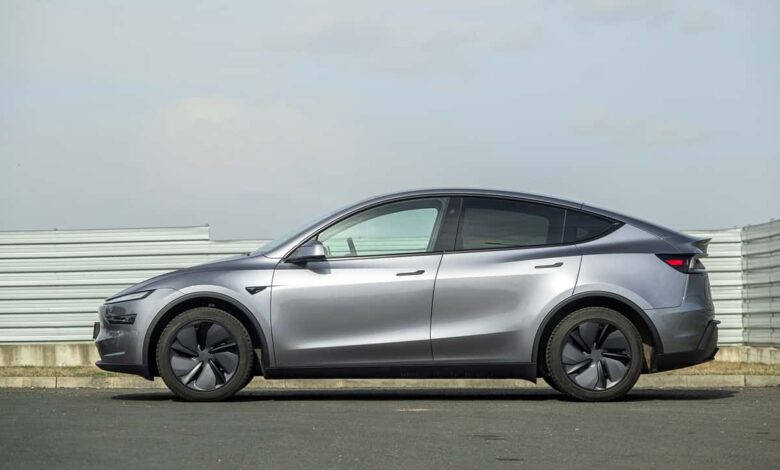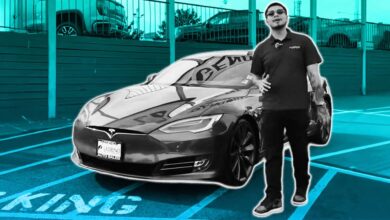Here Are All The EVs And Hybrids That Get A Tax Credit In 2025


With all sorts of pro-electric vehicle policies set to be terminated by Congress in the coming months, you may be wondering: Which cars qualify for the $7,500 EV federal tax credit in 2025?
It’s the right question to ask right now, if you’ve been mulling over buying a new electric car. Now is the best time to buy, if you want the absolute best EV deal. The Senate passed a wide-ranging domestic policy bill on Tuesday that would sunset EV tax credits for new, used and leased plug-in cars after September 30.
The legislation still needs to pass the House, but the writing is on the wall, folks: The EV tax credit is ending. And that means the clock is ticking on taking advantage of this policy.
Eligible Vehicles For The EV Tax Credit In 2025
Not every EV qualifies for the federal tax credit due to the policy’s strict rules around where EVs can be made and where their batteries can come from.
Some of our favorite EVs on the list include the Cadillac Optiq, Chevrolet Equinox EV, Hyundai Ioniq 9 and Tesla Model Y. (Check out our full reviews of those vehicles in the links provided.)
Those rules and the fast pace of the EV market mean that the list changes frequently. Here’s the full and most up-to-date list of eligible EVs from FuelEconomy.gov, where you can also check if a certain car qualifies from its VIN:
| Make | Model | Model Year | Credit Amount | MSRP Limit |
| Acura | ZDX | 2024-2025 | $7,500 | $80,000 |
| Cadillac | Lyriq (Luxury, Sport and V-Series models) | 2024-2026 | $7,500 | $80,000 |
| Cadillac | Optiq | 2025-2026 | $7,500 | $80,000 |
| Cadillac | Vistiq | 2026 | $7,500 | $80,000 |
| Chevrolet | Blazer EV (LT, RS and SS models) | 2024-2025 | $7,500 | $80,000 |
| Chevrolet | Equinox EV (LT and RS models) | 2024-2025 | $7,500 | $80,000 |
| Chevrolet | Silverado EV (LT model) | 2025-2026 | $7,500 | $80,000 |
| Ford | F-150 Lightning Flash | 2024–2025 | $7,500 | $80,000 |
| Ford | F-150 Lightning Lariat | 2023-2025 | $7,500 | $80,000 |
| Ford | F-150 Lightning XLT | 2023–2025 | $7,500 | $80,000 |
| Genesis | Electrified GV70 | 2026 | $7,500 | $80,000 |
| Honda | Prologue | 2024-2025 | $7,500 | $80,000 |
| Hyundai | Ioniq 5 | 2025 | $7,500 | $80,000 |
| Hyundai | Ioniq 9 | 2026 | $7,500 | $80,000 |
| Jeep | Wagoneer S | 2025 | $7,500 | $80,000 |
| Kia | EV6 | 2025 | $7,500 | $80,000 |
| Kia | EV9 | 2026 | $7,500 | $80,000 |
| Tesla | Cybertruck Dual Motor | 2025 | $7,500 | $80,000 |
| Tesla | Cybertruck Long Range | 2025 | $7,500 | $80,000 |
| Tesla | Cybertruck Single Motor | 2025 | $7,500 | $80,000 |
| Tesla | Model 3 Long Range All-Wheel Drive | 2025 | $7,500 | $55,000 |
| Tesla | Model 3 Long Range Rear-Wheel Drive | 2025 | $7,500 | $55,000 |
| Tesla | Model 3 Performance | 2025 | $7,500 | $55,000 |
| Tesla | Model X All-Wheel Drive | 2025 | $7,500 | $80,000 |
| Tesla | Model Y Long Range All-Wheel Drive | 2025-2026 | $7,500 | $80,000 |
| Tesla | Model Y Long Range Rear-Wheel Drive | 2025-2026 | $7,500 | $80,000 |
| Tesla | Model Y Performance | 2025 | $7,500 | $80,000 |
And here’s the list of qualifying plug-in hybrids in 2025:
| Make | Model | Model Year | Credit Amount | MSRP Limit |
| Chrysler | Pacifica PHEV | 2024-2025 | $7,500 | $80,000 |
Federal EV Tax Credit Income And Price Caps
EV buyers who want to cash in on the tax credit can’t make more than a certain amount in adjusted gross income. They can use their income in the year they take delivery, or from the previous year. The caps are as follows:
- $300,000 for married couples filing jointly
- $225,000 for heads of households
- $150,000 for all other filers
The vehicle they buy also needs to fall under price caps:
- $80,000 for vans, SUVs and pickup trucks
- $55,000 for other vehicles
Claiming The EV Tax Credit
The EV tax credit has been around for many years. And for most of that time, Americans could only claim it at tax time and receive a refund. Now, thanks to revisions in the Inflation Reduction Act, the credits can be applied at the “point of sale.” That means you can get an instant price cut on these cars, lowering their upfront cost and eliminating any uncertainty that changing federal policies might create.
Those point-of-sale rebates have proved mighty popular. Last year, EV buyers received over $1 billion in incentives for some 150,000 car purchases, according to the U.S. Treasury Department.
What Else To Know About The EV Tax Credit
The longstanding EV tax credit was revised and modernized as part of the Inflation Reduction Act, which passed in 2022. That legislation had a number of goals—including possibly conflicting ones—like encouraging local manufacturing and lessening China’s iron grip on the battery supply chain. (The tax credits also have limits based on a buyer’s annual income and the price of the vehicle in question to keep these from just being luxury gifts to wealthy drivers.)
The new credits went into effect in January of 2023. But over the subsequent months, the list of qualifying vehicles became narrower and narrower, prioritizing batteries and battery components made in North America as well. Now, the rules stipulate that starting in 2024 any vehicle containing battery components from what the government calls a “foreign entity of concern” will be excluded from receiving tax credits. The so-called “FEOC” rules pretty much directly target China, and given that country’s utter dominance of the battery supply chain, a lot of new cars get left out.
On the plus side, it’s crucial to note that leasing will still get you the full tax credit regardless of where the car was made, a loophole that has greatly benefitted foreign manufacturers like Kia and Hyundai. However, that credit is going away soon too. So if you want to take advantage of incredible EV lease deals, you’d better act fast.
Contact the author: patrick.george@insideevs.com
(This guide was last updated on July 2, 2025)
Source link



